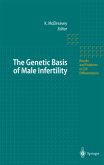The rapid developments in molecular genetics have clarified many of the muta tions in monogenic thyroid diseases over the last two decades; now the target of molecular thyroid genetics has become the oligogenic thyroid diseases. These include the autoimmune thyroid diseases and familial thyroid cancers, both of which are much commoner than the monogenic diseases. However, the method ological approach to the genetics of these more complex diseases is still far from being well established. Although the discovery of susceptibility genes has been partially accomplished in complex diseases such as asthma, Crohn's dis ease, and types I and II diabetes mellitus, the elucidation of susceptibility genes in complex diseases remains a major challenge. This volume contains papers presented at the International Symposium on the Genetics of Complex Thyroid Diseases. This meeting was held in association with the International Thyroid Congress in Kyoto in October 2000 and sup ported in part by the Japan Intractable Diseases Research Foundation and Knoll Pharmaceuticals Inc. The symposium was the first international symposium con cerning the genetics of complex thyroid diseases and was restricted to the study of the autoimmune thyroid diseases and familial thyroid cancer. Twenty distin guished researchers from the United States, the United Kingdom, France, Ger many, Italy, and Japan were invited. Each presentation precipitated intense dis cussion and there was much consensus during the meeting. Nevertheless, this volume will leave the reader with a clear understanding of how little we still know.
Bitte wählen Sie Ihr Anliegen aus.
Rechnungen
Retourenschein anfordern
Bestellstatus
Storno








